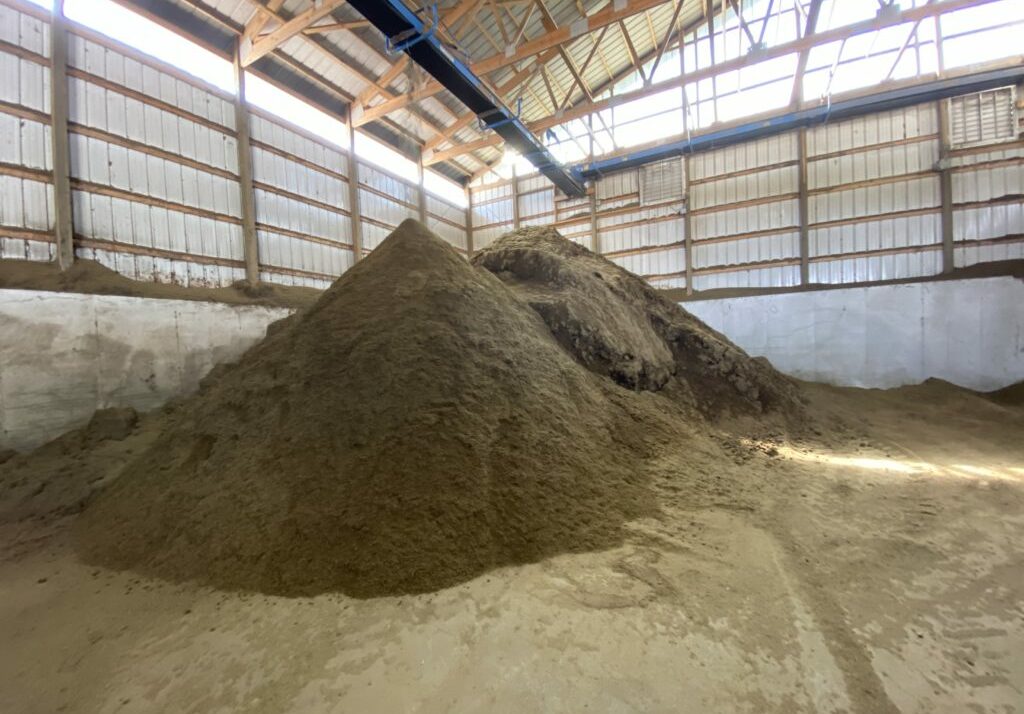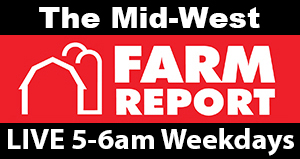
Photo: Bedding is the solid byproduct of the manure digester
Conservation, carbon credits, environmental sustainability — these are topics that are circling in every commodity from dairy to cash crops and from livestock to specialty crops. It’s also a key priority at the national level as the Biden administration and USDA continue the ‘Climate Smart’ agenda. But there are plenty of Wisconsin farmers that have already been making strides in conservation.
One example of an early adopter is the Crave Brothers Farm and Farmstead Cheese in Waterloo. It’s a 2,100 cow dairy on 3,500 acres. The cheese plant produces fresh mozzarella, mascarpone, Oaxaca, string cheese and fresh curds.
The manure digester on site converts cheese waste and manure into electricity and bedding. The dairy, cheese plant and cropping systems all work together in the family’s environmental and economic sustainability story, says Mark Crave.
“The biggest significant return on investment was when we started drying bedding,” Crave explains. “Producing electricity alone doesn’t generate enough revenue, and actually only about half the revenue is from electricity, and the other half would be from bedding. We produce enough bedding to bed about 3,000 free stalls every week.”
After the manure is digested, the material is squeezed. The liquid is valuable nutrients for the farm fields. The solids are further dried into bedding for cattle.
“We get it down to about 50 percent moisture where it’s a good spot where we can put it under cows and have good udder health and good cow comfort and not a lot of dust,” Crave says.
In the field, the Crave family has cover crops, a drip manure system and a nutrient management plan. All of these practices together are adding value to the farm, Crave explains.
“Some of those practices by themselves might be hard to justify,” he says. “It works for us. We strive hard to leverage each one of those operations to be efficient, to be profitable, to stand on their own. A digester system that isn’t performing well will cost you money. And you hate to take money from the cows … only to fill in a hole for another area of the operation.”
With conservation dollars on the table from federal, state and local entities for carbon reduction, can early adopters take advantage of those incentives and rewards? At this point, the Craves haven’t been able to.
“A lot of the credits come for improvements or changes you’ve made, so early adapters of, let’s say cover crops or our digester system, aren’t capturing any of those carbon credits right now because it’s not new,” he says.
But he adds it’s always evolving.
“I just heard a speaker back in December who said, ‘whatever you learned about carbon credits a month ago, it’s changed;’ and so the challenge is to keep up with it and find an opportunity where there’s something that will benefit us for some of the effort we’ve already put forward,” Crave says.

Leave a Reply